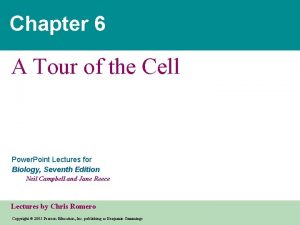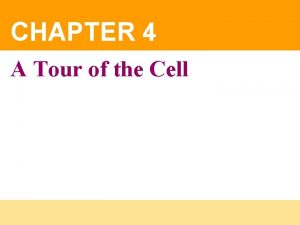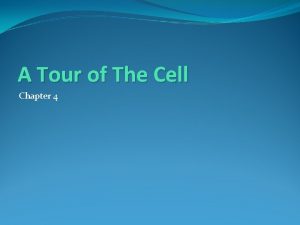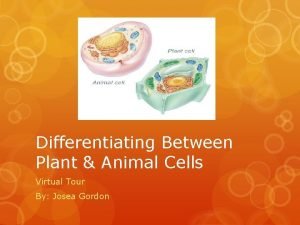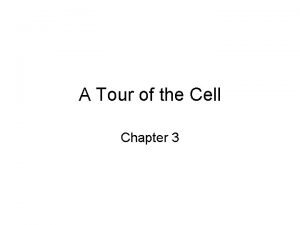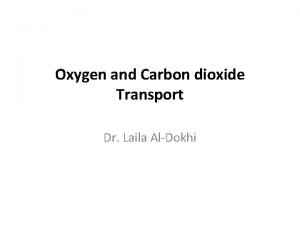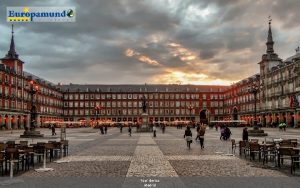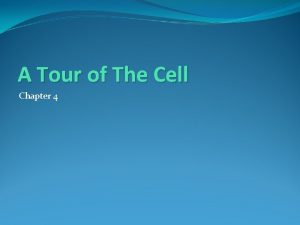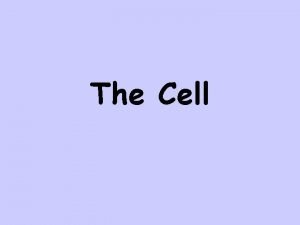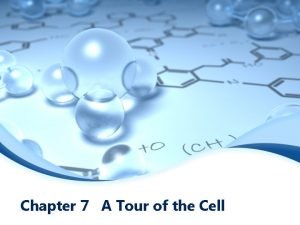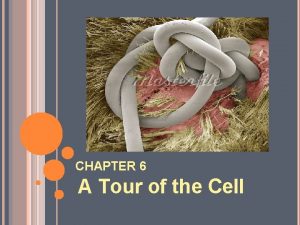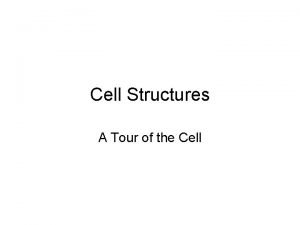A Tour of The Cell Chapter 4 Effect






















- Slides: 22

A Tour of The Cell Chapter 4

Effect of Cell Size on Surface Area Same total volume, but greater surface area to volume in smaller cells

Most Cells Are Microscopic Small things have a greater SA to volume ratio, allowing cells to maximize exchange across the plasma membrane Larger cells have less SA relative to their volume which is not efficient for maximizing exchange

Scanning & Transmission Electron Microscopes


Prokaryotic cells are Structurally Simpler than Eukaryotic Cells

NUCLEUS: Nuclear envelope Smooth endoplasmic reticulum Chromosomes Nucleolus Rough endoplasmic reticulum Lysosome Centriole Ribosomes Peroxisome CYTOSKELETON: Microtubule Intermediate filament Microfilament Golgi apparatus Plasma membrane Mitochondrion

NUCLEUS: Rough endoplasmic reticulum Nuclear envelope Chromosome Ribosomes Nucleolus Smooth endoplasmic reticulum Golgi apparatus CYTOSKELETON: Central vacuole Microtubule Chloroplast Cell wall Intermediate filament Plasmodesmata Microfilament Mitochondrion Peroxisome Plasma membrane Cell wall of adjacent cell

Eukaryotic Cells are Partitioned into Functional Compartments A eukaryotic cell has: A nucleus- DNA surrounded by a nuclear membrane Cytoplasm - intracellular fluid outside of nucleus containing organelles A plasma membrane—flexible outer boundary of cell

Plasma Membrane Bimolecular layer of lipids and proteins Plays a dynamic role in cellular activity Separates intracellular fluid (ICF) from extracellular fluid (ECF) Outside cell Inside cell

The Nucleus is the Cell’s Genetic Control Center The Nucleus : Contains chromatin = threadlike complex of DNA & proteins Is surrounded by a nuclear envelope with nucleopores Contains a nucleolus, where ribosomes are assembled

The Endoplasmic Reticulum is a Biosynthetic Factory Interconnected tubes & parallel membranes (cisternae) Continuous with the nuclear membrane Two varieties: Rough ER -external surface studded with ribosomes Ribosomes are the platform for protein synthesis Smooth ER -lacks ribosomes; functions in lipid synthesis and detoxification of drugs, synthesis of steroid sex hormones

Lysosomes are Digestive Compartments Within a Cell Spherical membranous bags containing digestive enzymes (acid hydrolases) Digest unwanted material for the cell

Mitochondria harvest chemical energy from food Double-membrane structure with shelf-like cristae and its own DNA Provides most of cell’s ATP

Chloroplasts convert solar energy to chemical energy Chloroplasts are plant organelles ; site of photosynthesis Found in all green parts of a plant Chloroplast Stroma Inner and outer membranes Granum Intermembrane space

The Golgi Apparatus Stacked and flattened membranous sacs (cisternae) Processing, packaging and shipping proteins Rough ER Phagosome ER membrane Plasma membrane Vesicle becomes lysosome Golgi apparatus Secretory vesicle Secretion by exocytosis Extracellular fluid

The Cytoskeleton Helps Organize the Cell’s Structure and Activities Elaborate series of rods throughout cytosol Microtubules (hollow) Microfilaments (solid) Intermediate filaments (solid)

Nucleus Actin subunit 10 nm 7 nm Microfilament Tubulin subunit Fibrous subunits 25 nm Intermediate filament Microtubule Copyright © 2010 Pearson Education, Inc.

Cilia and Flagella Move When Microtubules Bend Flagella - whip like, tails that move an entire cell Cilia -short, hair-like structures that move substances across cell surfaces

Membrane Junctions Three types: Tight junctions- Prevent fluids and most molecules from moving between cells Desmosomes- Rivets” or “spot-welds” that anchor cells together Gap junctions- proteins form pores that allow small molecules to pass from cell to cell For spread of ions between cardiac or smooth muscle cells

Tight junctions Anchoring junction Gap junctions Plasma membranes of adjacent cells Extracellular matrix

The Inner Life of The Cell
 Shanghai world financial tour eiffel tours petronas
Shanghai world financial tour eiffel tours petronas Tour guide vs tour escort
Tour guide vs tour escort Dangerous world tour history world tour - hockenheimring
Dangerous world tour history world tour - hockenheimring Chapter 6 a tour of the cell answers
Chapter 6 a tour of the cell answers Where is the nucleoid region found
Where is the nucleoid region found A tour of the cell chapter 4
A tour of the cell chapter 4 Virtual cell tour
Virtual cell tour A tour inside the cell answers
A tour inside the cell answers The scientist mathias schleiden studied _______ in ______.
The scientist mathias schleiden studied _______ in ______. Bohr effect in respiration
Bohr effect in respiration Founder effect vs bottleneck effect
Founder effect vs bottleneck effect Income effect formula
Income effect formula Hình ảnh bộ gõ cơ thể búng tay
Hình ảnh bộ gõ cơ thể búng tay Ng-html
Ng-html Bổ thể
Bổ thể Tỉ lệ cơ thể trẻ em
Tỉ lệ cơ thể trẻ em Voi kéo gỗ như thế nào
Voi kéo gỗ như thế nào Chụp phim tư thế worms-breton
Chụp phim tư thế worms-breton Chúa yêu trần thế
Chúa yêu trần thế Môn thể thao bắt đầu bằng chữ f
Môn thể thao bắt đầu bằng chữ f Thế nào là hệ số cao nhất
Thế nào là hệ số cao nhất Các châu lục và đại dương trên thế giới
Các châu lục và đại dương trên thế giới Công thức tính thế năng
Công thức tính thế năng



